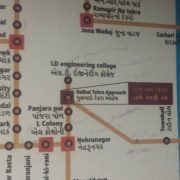The Great Indian Cash Purge
By Vinit Mukhija, FCL of Global Urbanization and Regional Development, Professor of Urban Planning
While the United States was shaken up by the unexpected election of Donald Trump to the Presidency, India also received some surprising news on November 8th. The Indian Prime Minister, Narendra Modi, who in a recent New York Times op-ed was compared to Trump for his agenda of economic development and [Hindu] identity politics, declared that India’s largest currency notes—500 and 1,000 Rupee banknotes (approximately $7.50 and $15.00)—would be demonetized as legal tender the next day. This purge, he argued, would crackdown on the stock of counterfeit money in the country and reduce endemic corruption by eliminating “black” or untaxed and unaccounted money. Most Indian observers, including the country’s leading news magazine India Today and top sports and movie stars, enthusiastically praised the announcement as a bold and decisive move. Reports also suggested that international community supported the move. In the past two weeks, however, demonetization has drawn much heavier criticism and skepticism.

Source: Rediff.com (http://www.rediff.com/business/report/eu-lauds-indias-demonetisation-move/20161113.htm).
Although demonetization was unexpected, it came a week after a voluntary income disclosure scheme to disclose black money and increase the country’s tax base ended. It also followed more modest precedents in 1946 and 1978. In the previous episodes, however, large currency notes were a relatively small part of the country’s economy. In 2016, ₹500 and ₹1,000 notes accounted for well over 80 percent of the total currency in circulation. Although the old banknotes are no longer usable, the Reserve Bank of India (India’s central bank) has provided detailed procedures for exchanging them. People are allowed to deposit them until the end of the year at banks with their value formally declared/accounted and credited to individual’s bank accounts. Cash withdrawals from banks and ATMs are allowed but restricted to a prescribed limit.
In explaining the demonetization policy, the Prime Minister focused on the presence of counterfeit money (which he and many others in the county associate with the financing of terrorist and antinational activities) and corruption. In particular, black money is often an integral part of real estate projects in India, and the cash component of property transactions can range from 20-30 percent. In smaller cities and in land purchases this can be even higher. Supporters of Modi’s policy expect real estate transactions to become more transparent and land prices to drop. Demonetization was also welcomed by credit card companies and online retailers and other businesses with interests in a cashless economy.

Source: Indian Express (http://indianexpress.com/article/business/economy/what-is-demonetisation-what-are-different-ways-of-demonetisation-and-demonetisation-in-india-by-pm-modi-explained-4374115/).
While long lines at banks and ATMs became the visible face of demonetization’s immediate impact, India’s affluent found ingenious workarounds to minimize its pain. It is also apparent that a monetary strategy that focuses on the stock of black money as opposed to its flows is unlikely to be successful in addressing corruption without immediate structural reforms focused on stricter tax collections and regulations, particularly in real estate, mining and gold, and political contributions and funding. According to a recent estimate, only 6% of black money is kept as cash. Most of the unaccounted wealth in the country is in the form of foreign bank accounts, real estate investments, gold and jewelry, and consumer goods. Moreover, the government is introducing new ₹500 and ₹2,000 banknotes. So India’s demonetization is really a reset rather than a move to a Kenneth Rogoff-inspired transition to a “cashless or less-cash society.”
The immediate costs and burdens of the policy are being most clearly felt in India’s vast and cash-based informal economy. Although the underlying assumption seems to be that that all buyers and sellers will move to the formal economy, not everyone can readily make the transition. According to scholarly estimates, the country’s informal economy accounts for about 45% of GDP and 80% of employment. News reports suggest that farmers are finding it difficult to sell their crops, and other informal economy businesses, like the garbage collectors and recyclers (in Dharavi and elsewhere) and the small retailers across the country, are struggling.
Although the government has made a push to increase the number of citizens with bank accounts (Jan Dhan Yojna) since 2014, the World Bank’s data on “financial inclusion” in 2014 indicated that only 53% of adults had opened bank accounts. Moreover, these accounts have a very high dormancy rate (over 40%), so bank access is much lower. Not surprisingly, the informal financial sector is significant in size and is estimated to be about 40% of formal lending. In addition to usurious moneylenders, it includes more grassroots-based institutions like chit-funds and Rotating Savings and Credits Associations (ROSCAS). All of them are probably adversely and severely affected.
As questions about the efficacy and implementation of demonetization as well as its disproportionate burden on the less affluent in the informal economy have grown, criticism of the government has picked up. The Prime Minster has been compared with Mao, criticized for being autocratic and callous, and more interested in theatrics. It remains to be seen if he pays a political price or is rewarded for being bold and decisive.













